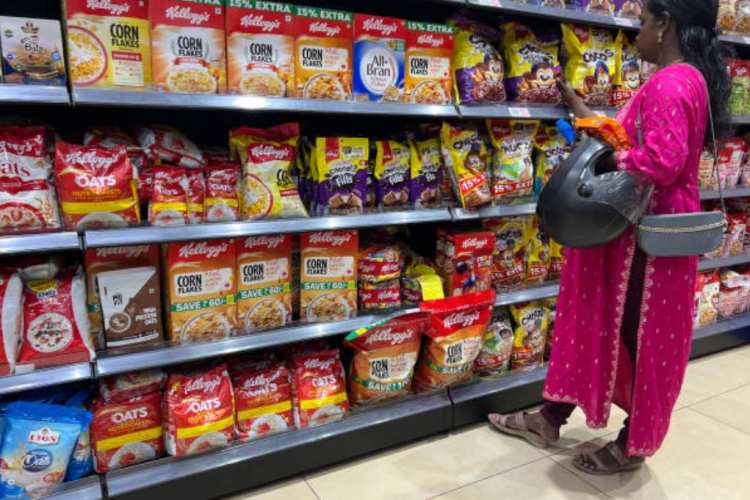
FMCG labelling reforms: After a Supreme Court directive mandated the government to frame clearer labelling norms for fast-moving consumer goods, the industry is still awaiting precise rules on displaying nutritional information—particularly on the front of packaged food products. The move follows a World Health Organisation recommendation urging front-of-pack warnings to help combat the global obesity epidemic.
The urgency is well-founded. WHO estimates that more than one billion people worldwide are obese. In India, where processed and packaged food consumption is rising steadily, experts say clearer labelling could be a game changer for public health.
READ | Vishwakarma scheme struggles to reach India’s informal sector
India’s patchy labelling standards
At the heart of the issue is a straightforward principle. Consumers must be able to easily identify the levels of fat, salt, and sugar in a food item—three nutrients most strongly linked to chronic health problems. Products that exceed recommended daily limits are classified as HFSS (High Fat, Sugar, and Salt), and prolonged consumption is widely acknowledged to increase the risk of obesity, diabetes, and cardiovascular disease.
Despite the stakes, India’s food labelling policy has been in limbo for nearly 15 years. Successive attempts by the Food Safety and Standards Authority of India (FSSAI) to introduce “Front-of-Pack Labelling” (FoPL) have faltered amid industry resistance. In 2018, a proposal to mark products exceeding safe thresholds with red indicators on the front of packaging was met with strong pushback. Companies argued that, given existing FSSAI standards, the majority of Indian packaged foods would have to carry warning labels—effectively branding entire product categories as harmful.
Subsequently, a government panel suggested a phased approach: introducing black warning marks in the first year with a health advisory, eventually progressing to red. That too failed to gain traction. Industry players claimed such measures would unfairly stigmatise products and hurt business.
Exploiting loopholes, misleading consumers
The lack of firm labelling rules has created space for misleading claims. Many FMCG brands plaster the front of packages with declarations such as “70% fat-free,” “no sugar,” or “high in fibre,” even as the actual nutritional information—often showing high levels of unhealthy ingredients—is tucked away in fine print at the back.
This lax approach to labelling has allowed global giants to adopt double standards. The baby formula controversy is a case in point: investigative reports revealed that multinational corporations sold products with significantly higher sugar content in India and other developing countries than in the EU or US, where stricter regulations are enforced.
A 2019 global study that reviewed 400,000 packaged food and beverage products across 12 countries found Indian products to have the highest levels of saturated fat and total sugar. The findings highlight the urgent need for robust regulatory action.
Need for labelling reforms
Health experts and consumer groups argue that India must adopt bold and intuitive labelling systems. One widely supported model is the “traffic light” scheme—green for healthy, yellow for moderate, and red for unhealthy. Chile adopted a similar framework in 2016 with positive results.
Another option is to place cigarette-style health warnings on unhealthy food products. Nutritionists say that any new system must mandate front-facing labels that clearly state the percentages of sugar, salt, and fat, alongside a revised set of permissible limits that better reflect modern dietary risks.
The government has begun engaging with companies and industry associations to develop a consensus, but progress remains slow. Past interventions—such as a 2023 advisory by the commerce ministry asking e-commerce platforms to delist misleadingly classified “health drinks”—have largely failed to change industry behaviour.
Ethical imperative for reform
While industry compliance is essential, the onus shouldn’t rest solely with regulators. Food companies must recognise their ethical responsibility to manufacture and market products that do not harm public health. Profits and public good need not be at odds—especially when dealing with everyday items consumed by millions, including children.
Self-regulation and transparency must go hand-in-hand with government oversight. Label reforms will only be meaningful if companies voluntarily move toward healthier formulations and honest marketing.
Consumer awareness: The missing ingredient
Even the best labelling standards will fall short unless paired with strong public awareness campaigns. Consumers—particularly children—must be educated about the risks of processed foods and taught to read and understand food labels.

A 2021 survey revealed troubling trends: 87% of rural children in India consumed chips or namkeen at least once a week; over 50% ate sweets regularly; and 40% had instant noodles weekly. Among adults, nearly half consumed fried snacks at least once a week.
In a country where packaged food—often made with palm oil and high levels of salt and sugar—is ubiquitous, no regulatory measure can substitute for a well-informed citizenry. Children who are taught early about the dangers of junk food are far less likely to become habitual consumers.
India’s moment of reckoning on food labelling is long overdue. The Supreme Court directive could become a turning point—if followed up with firm regulatory measures, corporate accountability, and widespread consumer education.
